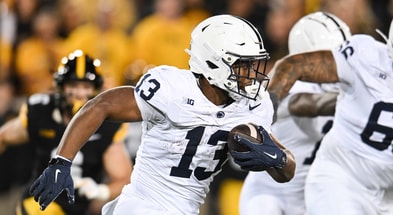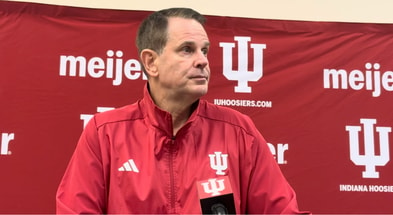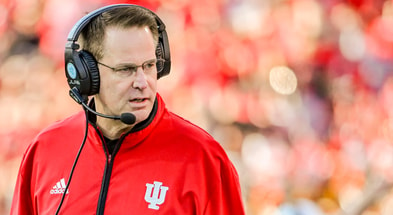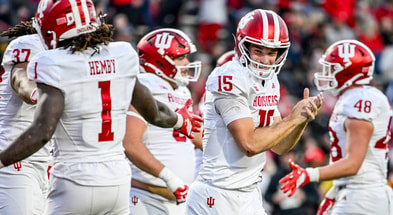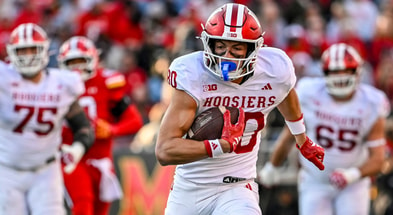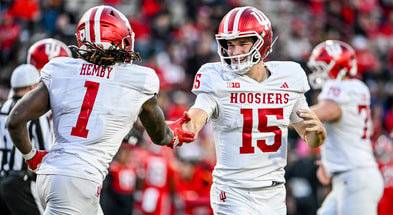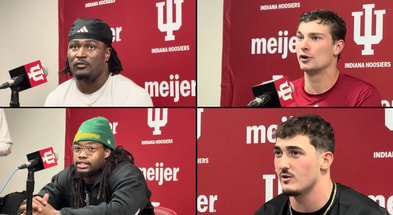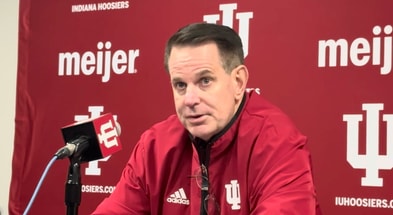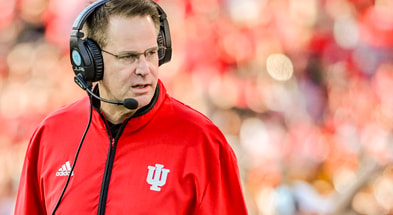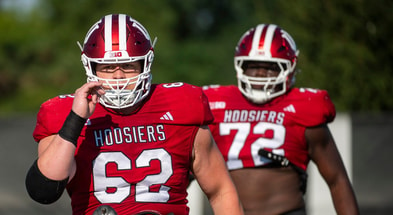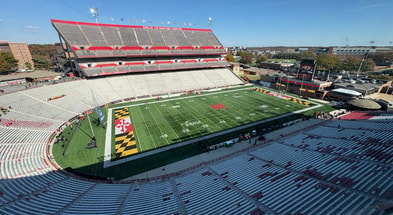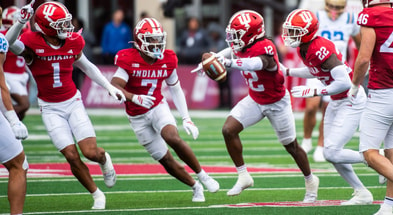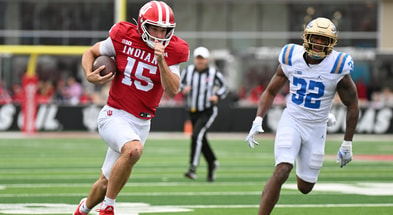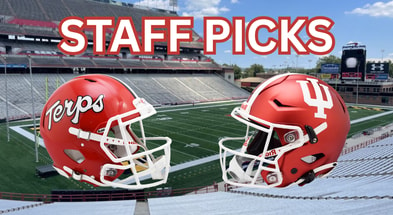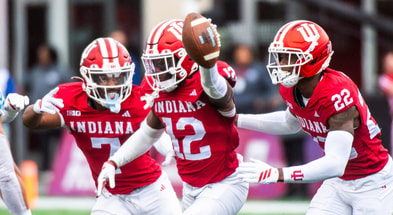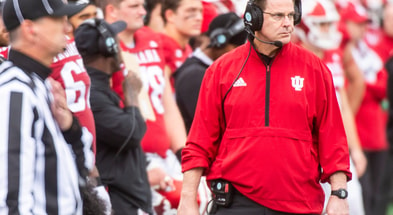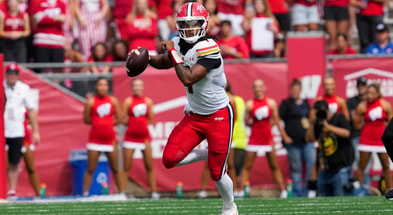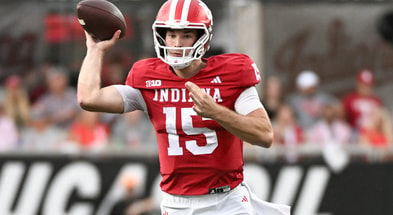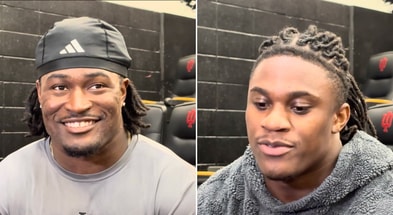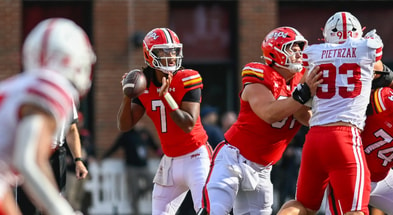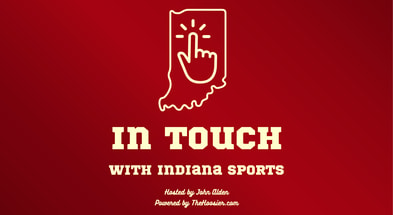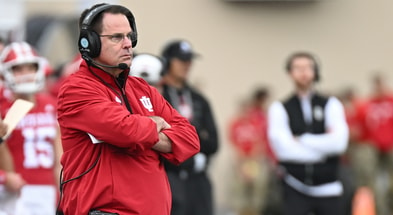Curt Cignetti calls himself 'GM and head coach,' says IU player was offered 1.5M to transfer
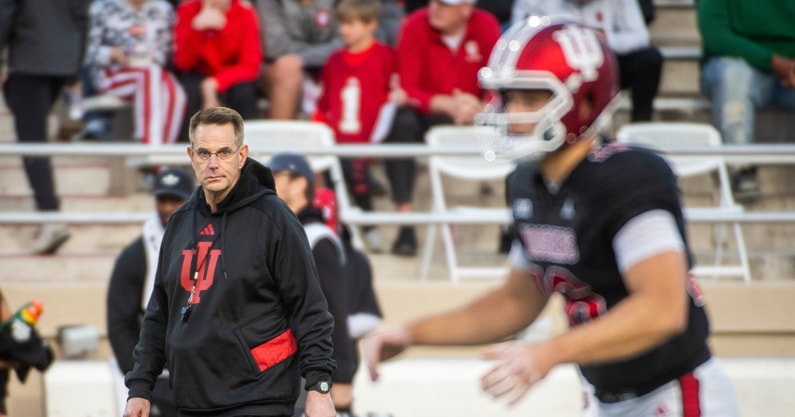
Donning his trademark audacious swagger, Indiana head coach Curt Cignetti stood at the podium Tuesday during Big Ten Football Media Days and made it perfectly clear that he’s not just running a team — he’s running an entire operation.
“I decide that,” Cignetti said, when asked how Indiana determines how much each player receives from revenue-sharing. “I’m the GM and head coach.”
It was a bold, unflinching statement — one that sums up the 63-year-old coach’s no-nonsense approach to this new, often chaotic era of college football.
In an environment where NIL, the transfer portal and revenue-sharing have upended decades of tradition, Cignetti isn’t just navigating the storm. He’s steering the ship.
“I’m a control freak,” Cignetti admitted. “I’m organized, I’m good with numbers. My name is on this. I spent a lot of years getting to this point. I’m the best one to do it.”
Cignetti’s self-appointed dual role comes as athletic departments around the country begin to fully embrace the terms of the House v. NCAA settlement.
Beginning July 1, Indiana, along with every program around the country, began directly paying its student-athletes, with the football program receiving an estimated 70 to 75 percent of the $20.5 million payout permitted under the deal.
In effect, a salary cap is now in place across major college football, forcing programs to get strategic about roster construction — and prompting many schools to hire dedicated general managers to handle contract logistics.
Cignetti? He’ll handle it himself.
He isn’t in every offensive or defensive meeting. He doesn’t call plays. That has freed Cignetti up to handle more of the backend responsibilities than ever before.
That backend work includes contract management, NIL coordination and balancing the budget like a Wall Street exec — all while trying to lead Indiana to its second College Football Playoff appearance in as many years.
Fortunately, Cignetti isn’t doing it entirely alone. His longtime coordinators, Mike Shanahan (offense) and Bryant Haines (defense), have been entrusted with a high degree of autonomy.
Meanwhile, Indiana Athletic Director Scott Dolson said earlier this year that the department is fully equipped to handle the newfound complexities of college athletics.
“We’ve got the right setup,” Dolson said back in March. “We have the mechanics of creating contracts and balancing those with NIL deals. The setup is as good as anybody.”
SEE ALSO: Elijah Sarratt praises Fernando Mendoza at B1G Media Days: ‘He’s a great quarterback’
Still, the stakes — and scrutiny — have never been higher.
Cignetti isn’t naive about the risks that come with big money in college sports, especially in the uncharted waters of NIL and revenue-sharing.
This spring, he saw firsthand how murky those waters can be.
During the spring transfer portal window, one of Indiana’s players received a $1.5 million offer to leave Bloomington — a blatant example of tampering, Cignetti said, and far beyond any gray area.
Top 10
- 1New
CFP Top 25 predictions
Projecting first rankings
- 2Hot
BCS Formula
Predicts first CFP Top 25
- 3
Heisman Trophy Poll
Top 10 rankings after Week 10
- 4Trending
Auburn Hot Board
Top candidates to replace Freeze
- 5
Bowl Projections
Full list of postseason matchups
Get the Daily On3 Newsletter in your inbox every morning
By clicking "Subscribe to Newsletter", I agree to On3's Privacy Notice, Terms, and use of my personal information described therein.
“There’s a difference between an inadvertent phone call and calling him during the spring and offering him $800,000 or $1.5 million — which I had happen this spring,” Cignetti revealed.
Cignetti declined to name the school involved, choosing instead to place his faith in the newly formed College Sports Commission — the so-called “new sheriff in town” — responsible for regulating NIL activity.
“You can go down that road,” he said of publicly outing the offending program, “but right now I’ve been totally led to believe there’s a new sheriff in town post–July 1, and I’ve got to trust the people I believe in.”
Still, the tampering revelation is a stark reminder of the challenges coaches now face. In a sport increasingly driven by contracts and offers, building — and keeping — a roster is more complicated than ever.
Despite the cash and chaos, Cignetti continues to preach the same team-first ideology.
“I think word gets around what everyone is making,” Cignetti said. “But I haven’t seen that affect the team dynamic up to this point. At the end of the day, everyone wants to be as good as possible.”
RELATED: Takeaways from Curt Cignetti’s Big Ten Football Media Days podium appearance
It’s the culture he’s instilled since arriving in Bloomington. From the start, he’s made it clear that personal goals take a backseat to team success.
“You can’t ever have selfishness on your team — ever,” Cignetti said. “When the team is successful, everyone benefits.”
In an era when many coaches are scrambling to adapt to the professionalization of college sports, Cignetti is doubling down on his way — equal parts old school and forward-thinking.
He’ll keep running the show. He’ll keep crunching the numbers. And he’ll keep trusting that the system now in place — with real contracts, real regulators and real stakes — will bring some long-needed order to a sport that’s teetered on the edge of chaos.
“I’ve been doing this a long time,” Cignetti said. “And I know what works.”
If Indiana keeps winning, maybe his GM-head coach hybrid model becomes the new norm. If not, the experiment may serve as a cautionary tale.
Either way, Cignetti isn’t asking for permission. He’s already in charge.
Not yet a member of TheHoosier? Take advantage of our launch with On3 and join our community! Just $1 for your first week and then 50% off the rest of your FIRST YEAR! Join here.
